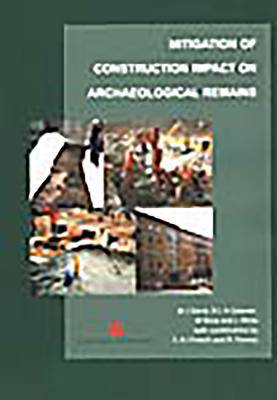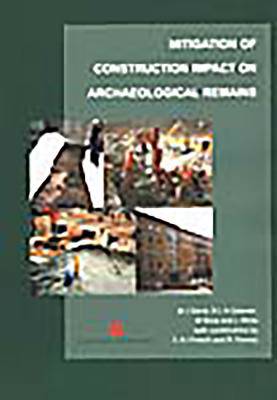
Je cadeautjes zeker op tijd in huis hebben voor de feestdagen? Kom langs in onze winkels en vind het perfecte geschenk!
- Afhalen na 1 uur in een winkel met voorraad
- Gratis thuislevering in België vanaf € 30
- Ruim aanbod met 7 miljoen producten
Je cadeautjes zeker op tijd in huis hebben voor de feestdagen? Kom langs in onze winkels en vind het perfecte geschenk!
- Afhalen na 1 uur in een winkel met voorraad
- Gratis thuislevering in België vanaf € 30
- Ruim aanbod met 7 miljoen producten
Zoeken
Mitigation of Construction Impact on Archaeological Remains
M J Davis, Kasia Gdaniec, M Brice, White
Paperback | Engels
€ 9,95
+ 19 punten
Omschrijving
This volume will be an invaluable asset to all archaeologists involved in fieldwork and site management. In the modern environment of developer-funded archaeology, commercial development and site preservation, there are more and more cases where archaeological sites are being impacted upon by various forms of construction. In order to understand and protect the historic environment wherever possible, archaeologists are faced with the crucial task of making decisions on how best to combine the needs of development whilst maintaining our archaeological heritage. Yet the majority of archaeologists have only limited knowledge of the great range of construction practices and how these can impact upon archaeological deposits and structures. This book has been researched and produced with these problems in mind, to inform and assist archaeologists in making decisions where sites may be threatened by development. Extensive information on the range of construction techniques as well as a range of suggested strategies to mitigate the impact of the techniques outlined. The information on construction types and impacts is supported by an annotated literature review, case studies, a series of technical appendices of engineering processes and a data base of mitigation/preservation in situ case studies collected from the British archaeological community.
Specificaties
Betrokkenen
- Auteur(s):
- Uitgeverij:
Inhoud
- Aantal bladzijden:
- 91
- Taal:
- Engels
Eigenschappen
- Productcode (EAN):
- 9781901992472
- Verschijningsdatum:
- 31/12/2004
- Uitvoering:
- Paperback
- Formaat:
- Trade paperback (VS)
- Afmetingen:
- 209 mm x 298 mm
- Gewicht:
- 453 g

Alleen bij Standaard Boekhandel
+ 19 punten op je klantenkaart van Standaard Boekhandel
Beoordelingen
We publiceren alleen reviews die voldoen aan de voorwaarden voor reviews. Bekijk onze voorwaarden voor reviews.









